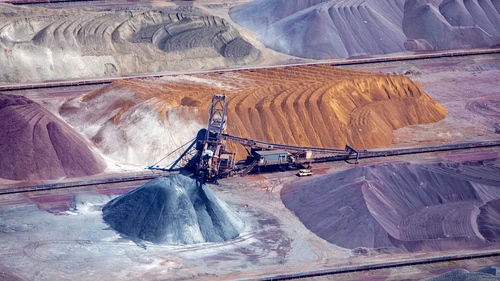
Latest in Denmark
Listen to different guest and experts in our podcast about private economy and the markets .
See moreSivua ei ole saatavilla suomeksi
Pysy sivulla | Siirry aiheeseen liittyvälle suomenkieliselle sivulleThe trade war has been a rollercoaster for the markets – here’s a day-by-day account of the ride so far.

2 April: President Trump announces from the White House that the US will impose import tariffs on the rest of the world. A general base tariff of 10 percent will come into force on 5 April. In addition, country-specific tariffs will be imposed. China, which has already been subject to tariffs, will be charged an additional import tariff of 34 percent. Against the EU, the corresponding tariff figure will be 20 percent. The country-specific tariffs will enter into force on 9 April.
3 April: The announced tariffs were worse than expected, triggering strong reactions on global stock exchanges. Investors are starting to price in a deteriorating economic outlook and an increased risk of recession.
4 April: China announces counter tariffs of 34 percent for all US goods. The tariffs are expected to enter into force on 10 April. China's response puts further pressure on global stock markets where an escalating trade war will be a worst-case scenario for the market.
5 April: Trump’s base tariff of 10 percent comes into effect.
7 April: The US threatens strong retaliation unless China backs down from responding with higher tariffs. The global stock markets once again react forcefully. Continued volatile stock market performance with clear signs of stress in the market.
9 April: The tariff war between the US and China escalates further, ending with the US raising tariffs against China to 145 percent. The corresponding tariff level in China is 125 percent. In a sharp U-turn, Trump announces that the country-specific tariffs against the rest of the world will be paused for 90 days. However, the pause does not include China. The tariff pause lifts sentiment in the market – at the same time sparking the most intense volatility in the global financial markets since the initial days of the pandemic.
10 April: The EU responds to Trump’s tariff pause by postponing its tariffs on steel and aluminum for 90 days. The tariff pause is well received by investors and the market continues to rebound.
11 April: The US announces further exemptions – this time electronic goods. China announces a ban on exports of a large amount of earth metals and magnets. However, the positive stock market sentiment persists.
14 April: Further tariff exemptions continue to strengthen market sentiment and the stock market continues to rebound.
15 April: The positive sentiment continues with support from the reporting season, which has had a strong start. Two weeks after Trump issued his tariff announcement on 2 April, the stock market has now recovered more than half of the decline (S&P 500).
Easter break.
23 April: President Donald Trump announces that tariffs on Chinese imports will "come down substantially". This announcement had an initial positive effect on the markets, recovering some of the losses incurred during the height of the trade tensions.

Listen to different guest and experts in our podcast about private economy and the markets .
See more
by Nordea Finland's analysts, economists and other experts.

Chief economist and senior analyst talks in their podcast about the market right now.
See more
Swedish experts on investment, stocks and private economy blogs.
See more
Sustainability
Amid geopolitical tensions and fractured global cooperation, Nordic companies are not retreating from their climate ambitions. Our Equities ESG Research team’s annual review shows stronger commitments and measurable progress on emissions reductions.
Read more
Sector insights
As Europe shifts towards strategic autonomy in critical resources, Nordic companies are uniquely positioned to lead. Learn how Nordic companies stand to gain in this new era of managed openness and resource security.
Read more
Open banking
The financial industry is right now in the middle of a paradigm shift as real-time payments become the norm rather than the exception. At the heart of this transformation are banking APIs (application programming interfaces) that enable instant, secure and programmable money movement.
Read more